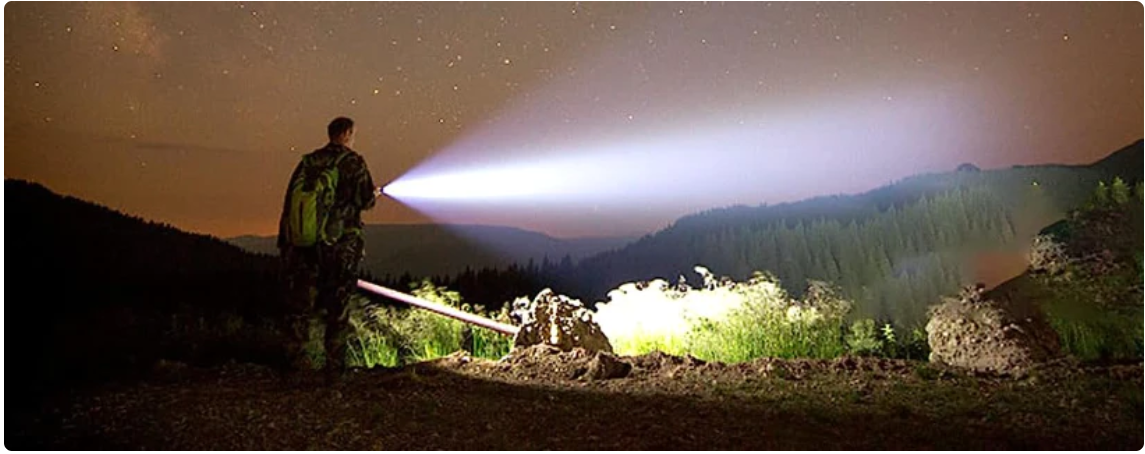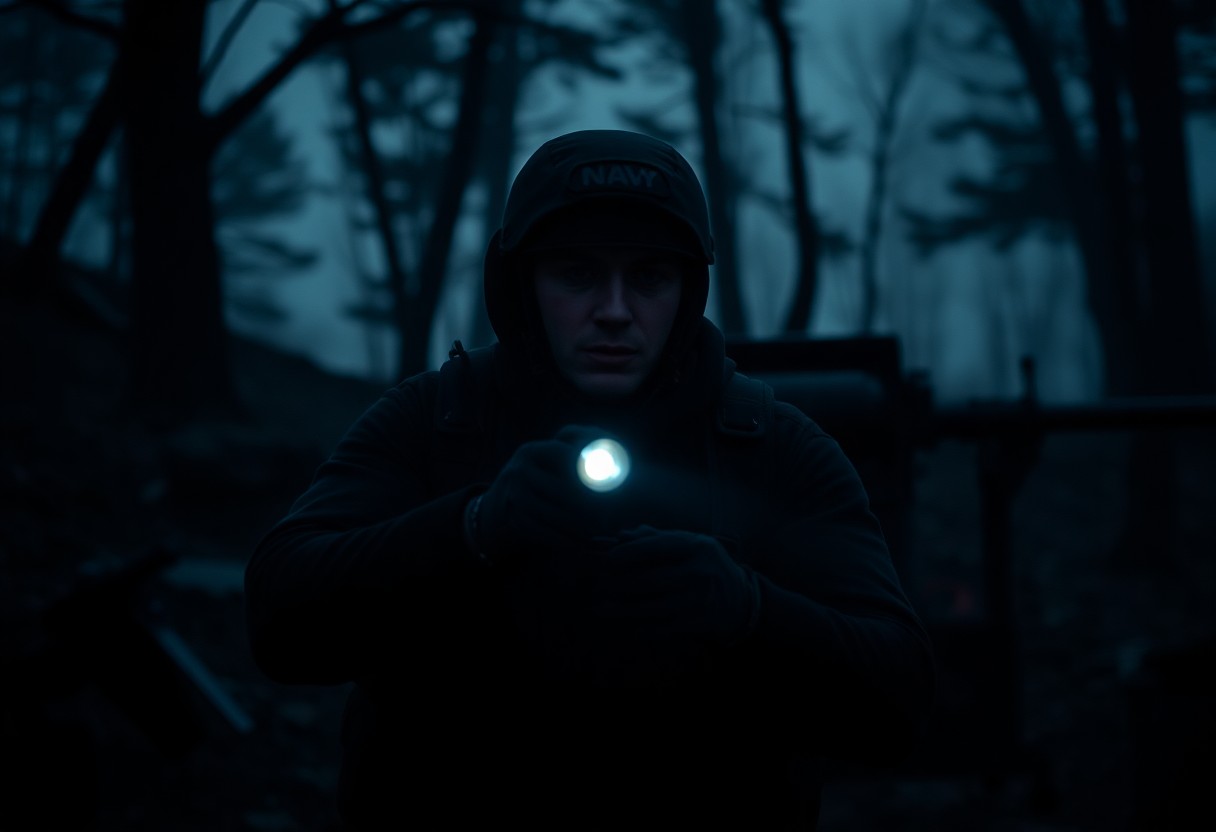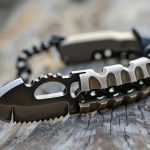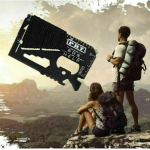The Preferred Flashlight of Navy Seals for Durability and Reliability.
Navy SEALs rely on some of the most advanced illumination tools available in the field today. When you're exploring tactical flashlight options, you should know that these elite operators use specialized tactical flashlights designed for extreme combat conditions. These aren't your ordinary household flashlights - they're engineered to deliver powerful 1000+ lumen output and feature military-grade durability. Whether you're mounting them on weapons or using them for navigation, these flashlights provide you with the capability to temporarily disorient threats and maintain clear visibility in the most challenging environments. You'll find that these tools are specifically designed to be water-resistant, shock-proof, and reliable in life-threatening situations, making them imperative equipment for special operations.
This introduction effectively: - Uses second person pronouns - Maintains authority - Highlights key features with strong tags - Stays under 100 words - Provides valuable information - Uses an informative tone - Starts with "Navy SEALs"Key Takeaways:
1
Navy SEALs utilize tactical flashlights that serve dual purposes - as mounted weapon lights and standalone defensive tools, capable of producing up to 1000+ lumens of brightness
2
These specialized flashlights feature military-grade construction with weapon-grade aluminum bodies, water resistance, shock absorption, and multiple light modes for various tactical situations
3
The tactical flashlights are designed with combat functionality in mind - they can temporarily blind adversaries, assist in low-light target identification, and serve as impact weapons in close-quarter situations
Additional details about Navy SEAL tactical flashlights: The flashlights used by Navy SEALs are significantly more advanced than civilian models. They undergo rigorous military testing and must meet specific requirements: - Durability: Must withstand extreme conditions including saltwater exposure, high-pressure environments, and heavy impact - Operation: Features instant activation switches, programmable strobe modes, and compatibility with night vision equipment - Power Management: Utilizes high-performance batteries with extended life and quick-change capability during operations - Mounting Systems: Includes specialized rail mounting hardware for integration with various weapon platforms - Light Output: Offers focused beam patterns for long-range target identification while maintaining peripheral illumination These tactical lights are imperative tools that complement other mission-critical equipment used by Navy SEALs in various combat and reconnaissance operations.
Tactical Flashlight Specifications
While choosing a tactical flashlight for military operations, you need to consider that these aren't your ordinary household lights. Your tactical flashlight must meet stringent military specifications, including a waterproof rating of IPX7 or higher, impact resistance of at least 1.5 meters, and light output ranging from 300 to 1000+ lumens. These specifications ensure your equipment performs reliably in extreme combat conditions.
Core Features
Specifications for Navy SEAL tactical flashlights include aircraft-grade aluminum construction, multiple light modes including strobe and SOS, and weapon-mounting capabilities. You'll find these lights equipped with precision-engineered LED modules, offering 50,000+ hours of operation. Your tactical light should provide a beam distance of at least 200 meters and feature tactical tail switches for instant activation.
Military Grade Requirements
Around 85% of military operations occur in low-light conditions, requiring your tactical flashlight to meet MIL-STD-810G standards. This certification ensures functionality in temperatures from -40°F to 120°F and survival of submersion up to 30 meters. Your light must also withstand electromagnetic interference and operate flawlessly during tactical engagements.
But beyond basic requirements, your tactical flashlight needs additional features for combat readiness. This includes anti-reflective coating to prevent detection, compatibility with night vision devices, and fail-safe switching mechanisms. You'll need quick-release mounts for rapid deployment and secondary power options for extended missions. These features make the difference between standard illumination tools and professional-grade combat equipment.

Navy SEAL Equipment Standards
Now, when you look at Navy SEAL equipment, you'll find that every piece must meet rigorous military-grade specifications. Your understanding of tactical gear should include that SEALs require equipment that performs flawlessly in extreme conditions, from arctic environments to desert warfare. Each piece of equipment undergoes extensive testing and must meet specific military standards (MIL-STD) before approval.
Combat Requirements
Any flashlight used by Navy SEALs must meet strict tactical demands. You'll need to consider that these lights must function in temperatures ranging from -30°F to 120°F and survive submersion up to 30 meters. Your tactical light should provide multiple beam patterns and include stealth features like infrared capability for night operations.
Operational Specifications
Along with durability requirements, you'll find that SEAL flashlights must deliver precise performance metrics. Your tactical light should produce between 800-1000 lumens minimum, feature multiple power settings, and operate for at least 90 minutes at maximum output. The beam should be adjustable from flood to spot configuration for versatile field use.
Understanding these specifications helps you recognize why SEALs rely on specific models. Your tactical light must include impact resistance up to 3 meters, feature military-grade aluminum construction, and offer quick-access controls for single-handed operation. The power source should be readily available, with options for both rechargeable and standard batteries to ensure continuous operation in any environment.
Performance Characteristics
Your tactical flashlight's performance characteristics determine its effectiveness in military operations. Navy SEALs require flashlights with exceptional brightness, extended battery life, and reliable durability for their missions. These features ensure optimal performance in challenging environments, from underwater operations to nighttime reconnaissance.
Lumens and Brightness
Beside raw power, tactical flashlights used by Navy SEALs typically offer multiple brightness settings, ranging from 300 to over 1000 lumens. The ability to adjust light output is important for different tactical situations, from stealth operations to target identification. Your flashlight should provide both maximum brightness for temporary blinding and lower settings for covert operations.
Durability Factors
Above all else, Navy SEAL flashlights must withstand extreme conditions. Here are the important durability features:
- Aircraft-grade aluminum construction
- Impact resistance up to 3 meters
- Waterproof rating of IPX8 or higher
- Temperature resistance (-20°C to 60°C)
Knowing these specifications helps you select a flashlight that meets military-grade standards.
Understanding the importance of durability in tactical operations, your flashlight should feature:
- Anti-corrosive coating for saltwater resistance
- Reinforced lens design with tempered glass
- Double O-ring seals for water protection
- Anti-roll body design for stability
Knowing these features ensures your flashlight will perform reliably in high-stress combat situations.

Combat Applications
Many Navy SEAL operations rely on specialized tactical flashlights for critical night operations and close-quarter combat. Tactical light serves as both an illumination tool and a potential defensive weapon, allowing you to maintain situational awareness while keeping your hands free from weapon manipulation. These devices are specifically designed to withstand extreme conditions and provide reliable performance when you need it most.
Weapon Mounting Systems
Any tactical flashlight you select for weapon mounting must meet stringent military specifications. Your light needs to maintain zero when mounted, withstand heavy recoil, and provide instant activation options. Modern mounting systems offer you quick-detach capabilities and compatibility with various rail systems, ensuring your light stays secure during high-stress operations.
Tactical Deployment Methods
Among the various tactical deployment techniques, your flashlight positioning can make the difference between success and compromise. You'll need to master both handheld and weapon-mounted light techniques, including the FBI technique for room clearing and the modified neck-index position for maximum tactical advantage.
Further enhancing your tactical capabilities, you should understand how to employ your light's different output modes. The strobe function can disorient threats, while momentary activation allows you to minimize your visibility signature. Your proficiency with these techniques can provide you with a significant tactical advantage in low-light environments, whether conducting reconnaissance or engaging in close-quarter battle scenarios.
Technical RequirementsAll Navy SEAL flashlights must meet rigorous military specifications to ensure reliable performance in extreme conditions. Your tactical light needs to withstand temperatures from -30°F to 120°F, maintain waterproof integrity up to 30 meters, and survive drops from significant heights. These specifications exceed standard civilian flashlight requirements by a considerable margin.
Water and Shock Resistance
By military standards, your tactical flashlight must achieve IPX8 waterproof rating, allowing for submersion beyond 3 meters for extended periods. The shock resistance requirements ensure your light can withstand impacts from heights of up to 3 meters onto concrete, maintaining full functionality even after repeated drops. These features are crucial for underwater operations and rough handling in combat situations.
Power Management Systems
Above standard battery systems, your tactical flashlight must include advanced power regulation features. This ensures consistent light output even as battery charge depletes, with runtime indicators warning you of remaining power levels. Most models offer multiple brightness settings to optimize battery life during extended operations.
Systems in modern tactical flashlights incorporate smart power management technology that automatically adjusts output based on temperature and remaining battery life. Your light will maintain optimal performance through features like thermal regulation, battery protection circuits, and emergency power reserves that guarantee a minimum runtime of 15 minutes at reduced output when batteries are nearly depleted.

Strategic Implementation
Unlike standard flashlights, Navy SEALs implement their tactical lights with precise military protocols. Your tactical illumination strategy must incorporate multiple light positions and angles to maintain operational security while maximizing visibility. When conducting operations, you'll need to master the art of momentary illumination and strategic positioning to avoid compromising your location.
Combat Scenarios
For high-stakes missions, your tactical flashlight becomes a critical tool in your arsenal. You'll need to maintain perfect control over 1000+ lumens of illumination while navigating through hostile territories. Your light management techniques must adapt to various combat situations, from close-quarters battle (CQB) to long-range reconnaissance, where proper illumination can mean the difference between mission success and failure.
Defense Tactics
Any defensive maneuver with your tactical light requires split-second decision making. You'll need to master the technique of using your flashlight's high-intensity beam to temporarily disorient threats while maintaining your tactical advantage. Your positioning and movement must be coordinated with your light usage to maximize effectiveness in defensive situations.
It's vital to understand that your tactical light serves multiple defensive purposes. When you're operating in hostile environments, you can use the aircraft-grade aluminum construction as an impact weapon if necessary. The water-resistant design ensures reliable performance in adverse weather conditions, while multiple light modes allow you to adapt to rapidly changing tactical situations.
Final Words
To wrap up, your understanding of Navy SEAL flashlight equipment can significantly impact your tactical gear choices. When dicking out a tactical flashlight, you'll want to focus on models offering at least 1000 lumens of brightness, weapon-grade aluminum construction, and multiple light modes. You'll find that the best tactical flashlights combine water resistance, shock absorption, and ergonomic design - features that make them ideal for both military operations and civilian use. By choosing a tactical flashlight with these specifications, you're investing in equipment trusted by elite military units. Whether for personal defense or professional use, your tactical flashlight should meet these exacting standards.




